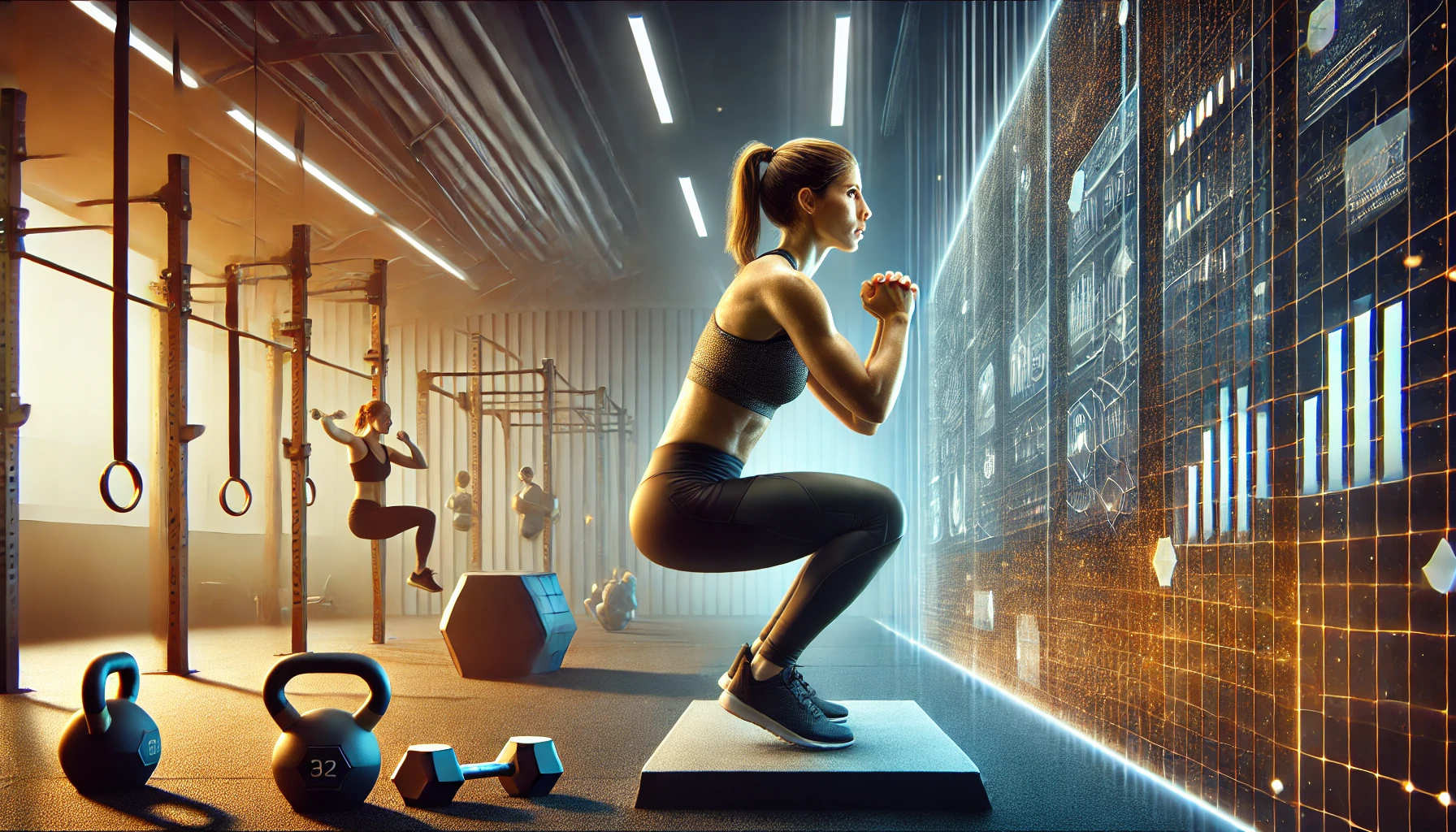The Ultimate Showdown: Foam Rollers vs. Massage Guns
In the world of fitness recovery, foam rollers and massage guns have become two of the most popular tools. Both claim to help alleviate muscle soreness, improve flexibility, and enhance recovery after intense workouts. With so many options available, it can be challenging to know which one to choose for your needs. Do you roll it out with a foam roller or blast your muscles with a massage gun? Let’s dive into the science, the benefits, and the drawbacks of each recovery tool to determine which one is best for you.
Understanding the Science of Muscle Recovery
Before we break down the specifics of foam rollers and massage guns, it’s essential to understand why muscle recovery is so important. When you work out intensely, your muscles endure microscopic tears. This is completely normal and necessary for muscle growth, but it also means that your muscles need time to repair. Without proper recovery, these tears can accumulate, leading to tightness, soreness, and even injury.
Muscle recovery tools like foam rollers and massage guns are designed to help relieve tension, improve blood flow, and speed up the healing process. They reduce muscle stiffness and increase the delivery of oxygen and nutrients to the muscles, which can promote faster recovery. The science behind both tools lies in their ability to alleviate tightness, reduce pain, and support the body’s natural healing process.
Foam Rollers: The Simplicity of Self-Myofascial Release
Foam rolling, or self-myofascial release (SMR), is a technique that uses a cylindrical foam roller to apply pressure to specific muscle areas. The goal is to release muscle knots (also known as trigger points) and alleviate muscle tension, which can improve flexibility and reduce soreness.
The science behind foam rolling is quite straightforward. When you roll over a muscle, the pressure stimulates the fascia, the connective tissue surrounding your muscles. Research shows that foam rolling can enhance blood flow, increase range of motion, and reduce delayed-onset muscle soreness (DOMS), which is the muscle soreness that typically occurs 24-48 hours after exercise. Studies have also suggested that foam rolling can help improve flexibility, making it an excellent choice for warming up or cooling down before and after a workout.
One of the major advantages of foam rolling is its simplicity and accessibility. Foam rollers are affordable, easy to use, and available in different densities. You don’t need any prior experience or special skills to get started, and they can be used almost anywhere. Whether you’re targeting large muscle groups like your hamstrings and quads or smaller areas like your calves and shoulders, foam rolling can help improve circulation and muscle function.
Massage Guns: Percussive Therapy for Deep Tissue Relief
Massage guns, also known as percussive therapy devices, have taken the fitness world by storm. These handheld devices use rapid pulses of pressure to stimulate muscle tissue, providing a deep tissue massage that promotes muscle recovery. The pulses are designed to increase blood flow, relieve muscle tension, and reduce soreness.
The science behind massage guns revolves around a process called mechanotransduction, where mechanical pressure or vibration stimulates cellular activity in tissues. Studies suggest that percussive therapy can reduce muscle soreness, increase flexibility, and promote relaxation by stimulating the nervous system. It has been shown to enhance circulation, reduce muscle tightness, and even help break up adhesions in the fascia.
Massage guns are particularly effective for deep tissue work, targeting specific areas of tightness or discomfort. They can penetrate deeper into the muscle compared to foam rollers, making them a great option for individuals who need more intense muscle relief. Many massage guns also come with various attachments, allowing users to customize the intensity and type of pressure for different muscle groups.
Comparing the Benefits: Which Tool Offers More?
Now that we understand the science behind each tool, let’s dive into the specific benefits of foam rollers and massage guns. Both offer significant recovery advantages, but each one has its unique strengths and weaknesses.
Foam Rollers: Accessible and Effective for General Recovery
Foam rollers are highly effective for general muscle recovery and are particularly great for releasing muscle tightness, improving flexibility, and preventing injury. They are simple to use and highly accessible, making them ideal for athletes of all levels. Foam rolling can be performed both before and after exercise to prepare the body for movement and to aid in recovery post-workout.
One of the key benefits of foam rolling is that it is low-tech and affordable. With a foam roller, you don’t need any batteries or charging time, and you can take it with you to the gym, on trips, or even use it at home. Foam rolling is also an excellent tool for maintaining muscle health over the long term, as it can be incorporated into daily routines to keep muscles pliable and reduce stiffness.
However, foam rollers are generally more effective for larger muscle groups and may not provide the deep tissue relief that some individuals need for stubborn knots or tight areas. They require a bit more body weight and positioning to target specific areas effectively, which can sometimes be challenging for certain muscle groups.
Massage Guns: Deep Tissue Relief and Precision
Massage guns, on the other hand, provide targeted relief, allowing for more precision and deeper penetration into muscle tissue. The rapid pulses of the massage gun allow you to focus on specific muscle groups, which is beneficial for releasing stubborn muscle knots, relieving chronic tension, and increasing blood circulation in hard-to-reach areas.
Massage guns are particularly effective for deep tissue work and can help reduce pain more quickly. They are also ideal for post-workout recovery when the muscles are sore and fatigued. The ability to adjust the intensity and change attachments makes massage guns versatile, allowing for customized treatments on different muscle groups. Additionally, many massage guns come with settings that make them ideal for warm-ups, cool-downs, and general muscle recovery.
Despite their effectiveness, massage guns can be more expensive, bulkier, and require charging. They also may not provide the same range of motion benefits as foam rollers. While they excel at breaking up tight spots and increasing blood flow in specific areas, they may not have the same overall effectiveness in improving flexibility and range of motion as foam rollers.
When to Use Foam Rollers vs. Massage Guns
While both foam rollers and massage guns are valuable tools in any fitness enthusiast’s recovery routine, they each serve slightly different purposes. Here’s a breakdown of when each tool might be most effective:
Foam Rollers:
Great for general muscle maintenance and injury prevention.
Ideal for targeting larger muscle groups (e.g., quads, hamstrings, calves).
Effective for warming up before workouts and cooling down afterward.
Suitable for improving flexibility and range of motion.
Affordable and easy to use at home, the gym, or while traveling.
Massage Guns:
Best for targeting specific muscle knots and tight spots.
Ideal for deep tissue massage and relieving chronic tension.
Excellent for post-workout recovery to speed up muscle healing.
Great for relieving soreness from intense or prolonged exercise.
More expensive and requires charging but offers customizable intensity.
Both tools can be integrated into a well-rounded recovery routine to maximize the benefits of each. Using a foam roller for general muscle recovery and flexibility, along with a massage gun for more targeted relief and deep tissue work, provides a comprehensive approach to muscle maintenance and recovery.
A Recovery Routine that Combines Both Tools
Rather than choosing between a foam roller and a massage gun, why not integrate both into your recovery routine? By combining the benefits of foam rolling and percussive therapy, you can create a recovery plan that targets your muscles from all angles. For instance, start with foam rolling before a workout to improve flexibility and prepare your muscles for exercise. Afterward, use a massage gun to focus on any areas of tightness or discomfort that require deeper attention. This dual approach will help you recover faster, reduce muscle soreness, and improve your overall performance.
Unique Recovery Routines You Can Try
To maximize the benefits of both foam rollers and massage guns, here’s a sample recovery routine that integrates both tools:
Pre-Workout:
Start with foam rolling to warm up your muscles and increase blood flow.
Target the larger muscle groups like the hamstrings, quads, and calves for flexibility and mobility.
Post-Workout:
Use the massage gun to target any sore or tight spots in specific muscle groups.
Spend extra time on areas that feel particularly stiff or where you feel muscle knots.
Daily Maintenance:
Incorporate foam rolling into your daily routine to keep muscles flexible and prevent stiffness.
Use the massage gun a few times a week for deeper muscle relaxation, especially after intense training sessions.
By creating a routine that incorporates both tools, you’ll give your muscles the attention they need to recover quickly and effectively.
Final Thoughts: Which Tool is Right for You?
Foam rollers and massage guns are both excellent recovery tools, each with its unique benefits. Foam rollers excel in improving flexibility, enhancing blood flow, and providing a cost-effective way to maintain muscle health. Massage guns, on the other hand, offer deeper tissue relief, targeted muscle treatment, and quick muscle soreness reduction. The key to maximizing your recovery is understanding your specific needs and combining the strengths of both tools in your routine.
Whether you choose to roll it out with a foam roller, use a massage gun for deep tissue relief, or combine both in your recovery plan, the important thing is to prioritize recovery as an essential part of your fitness journey. Investing in these tools can help you train harder, recover faster, and perform better in the long run. Choose the tools that best suit your goals and watch your performance reach new heights!




